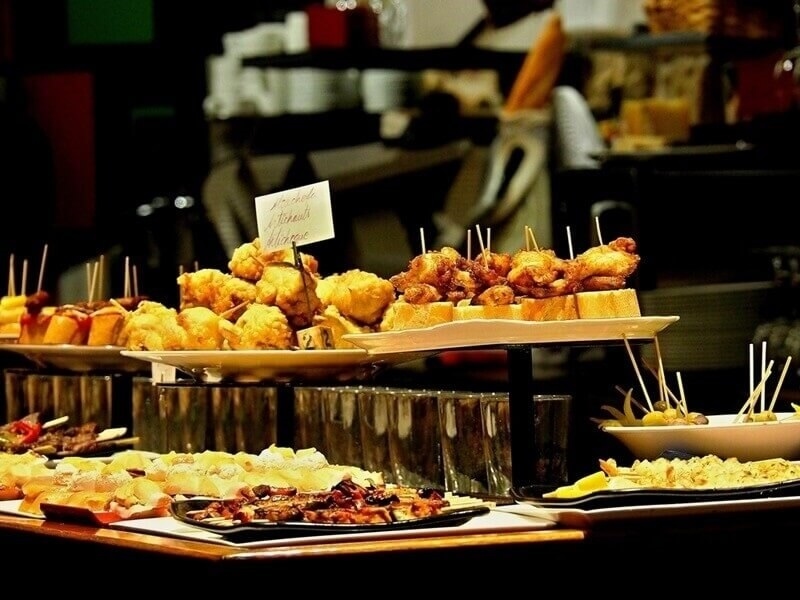
Spain is a land in which food, lifestyle, and birthday parties come together in unforgettable experiences. Throughout the year, locals and vacationers congregate at famous Spanish food festivals that show off not only nearby dishes but also the USA’s colorful traditions. From the satisfaction of the La Tomatina food combat in Spain to the refined flavors of the San Sebastián meals competition, these sports highlight the variety of Spanish gastronomy events that have received international repute.
What makes the ones activities particular is that they're greater than food—they're conventional meals and celebrations Spain has preserved for centuries. These precise Spanish fairs are the high-quality way to get pleasure from actual flavors while immersing yourself in records, song, and community spirit.
Every lifestyle celebrates meals; however, Spain elevates it into an art form. The famous Spanish meal fairs are not pretty much about eating; they're social gatherings in which people connect over shared backgrounds.
For Spaniards, these sports aren't occasional treats; they are a part of the countrywide rhythm of lifestyles, celebrated every three hundred and sixty-five days with enthusiasm.

Perhaps the most famous of these is the La Tomatina food fight in Spain, which takes place in the little community of Buñol near Valencia.
This quirky occasion commenced in the 1940s and has grown into one of the unique Spanish fairs, attracting tourists from across the globe. While it seems chaotic, there are guidelines: tomatoes have to be squashed before throwing, and the simplest tomatoes supplied by the organizers may be used.
Although the tomato war is the highlight, Buñol moreover celebrates its culinary subculture in the course of this time with dishes like paella and other Valencian specialties. Visitors often get to enjoy the richness of conventional food celebrations Spain offers, alongside the playful chaos of the tomato warfare.
Another jewel amongst well-known Spanish food galas is the San Sebastián food competition, also called Gastronomika.
The San Sebastián meals competition exemplifies Spanish gastronomy sports that interest not exceptional in way of life but also in innovation. It bridges Spain’s beyond with its current culinary present, making it one of the maximum particular Spanish festivals for any food lover.
Across Spain, galas rooted in tradition show off the USA.’s culinary range. These conventional food celebrations that Spain keeps to honor are deeply tied to religion, harvests, and networks.
These events are approximately greater than meals. They are about retaining the identification of areas and passing traditions to greater next generations. When attending, you’re now not just tasting dishes—you’re tasting history.
Beyond the big fairs, smaller Spanish gastronomy occasions occur throughout the course of the 365 days, each focusing on a particular product or dish.
These Spanish gastronomy occasions carry worldwide hobby to close by products at the same time as reinforcing local pride. They’re a critical part of the famous Spanish food gala's calendar.
Spain’s creativity is privy to no limits, and lots of unique Spanish festivals combine culinary reviews with different art forms.
These festivals display how diverse the Spanish cultural landscape is. Whether it’s cava, cheese, or chocolate, Spain's well-known shows a motive to have fun and present its flavors to the world.
The enduring enchantment of famous Spanish food festivals lies in what they constitute: network, records, and joy.
Spain’s way of life isn't always locked away in ingesting locations—it thrives in the outside, at tables shared by way of loads.
If you’re planning to enroll in any of these famous Spanish meals festivals, right here are some hints to make your revel in unforgettable:
Spain gives something for every person, irrespective of what time of 12 months you go to.
This rich calendar reflects how well-known Spanish meals fairs are woven into the United States’ yearly rhythm.
The reputation of Spanish gastronomy has encouraged international cuisine. For example:
The international community acknowledges the specific Spanish fairs not simply as cultural occasions but as contributions to international gastronomy.
Attending the famous Spanish food fairs is greater than a culinary adventure—it’s approximately experiencing Spain with all of your senses. You’ll:
Regardless of your preference for the tumultuous La Tomatina food fight in Spain, the elegant San Sebastián dinner opposition, or the coziness of traditional Spanish food festivals, these events are sure to leave you with priceless memories.
The heart of Spain beats most powerfully at its well-known Spanish food fairs. From the delight of the La Tomatina food fight in Spain to the splendor of the San Sebastián food competition, and from vibrant Spanish gastronomy events to cherished conventional meals celebrations in Spain, each 2d is a hazard to encompass a manner of lifestyles through flavor. These precise Spanish festivals aren’t just about meals—they are about community, background, and joy. If you ever need to experience Spain authentically, permit its fairs to guide your journey.
This content was created by AI